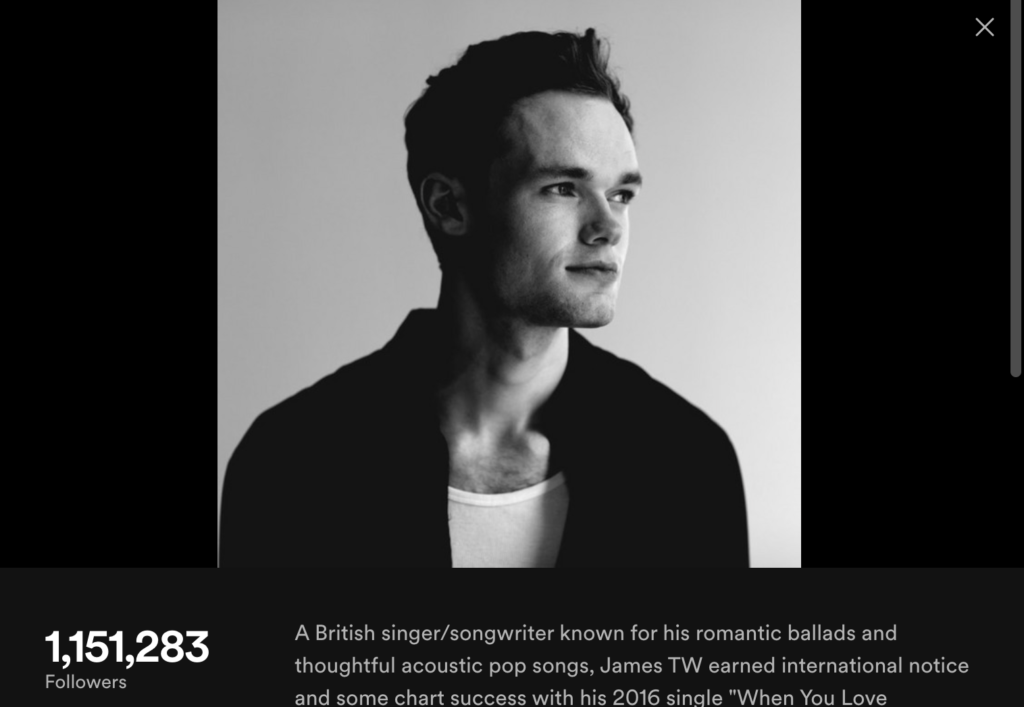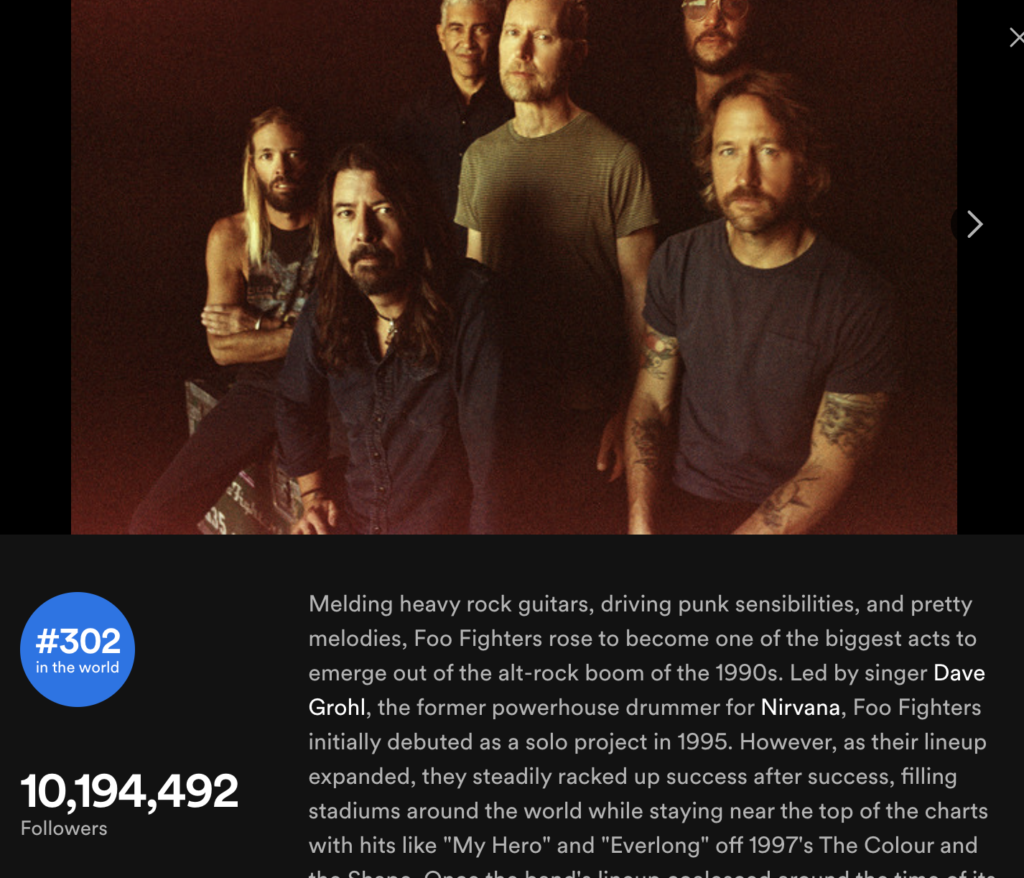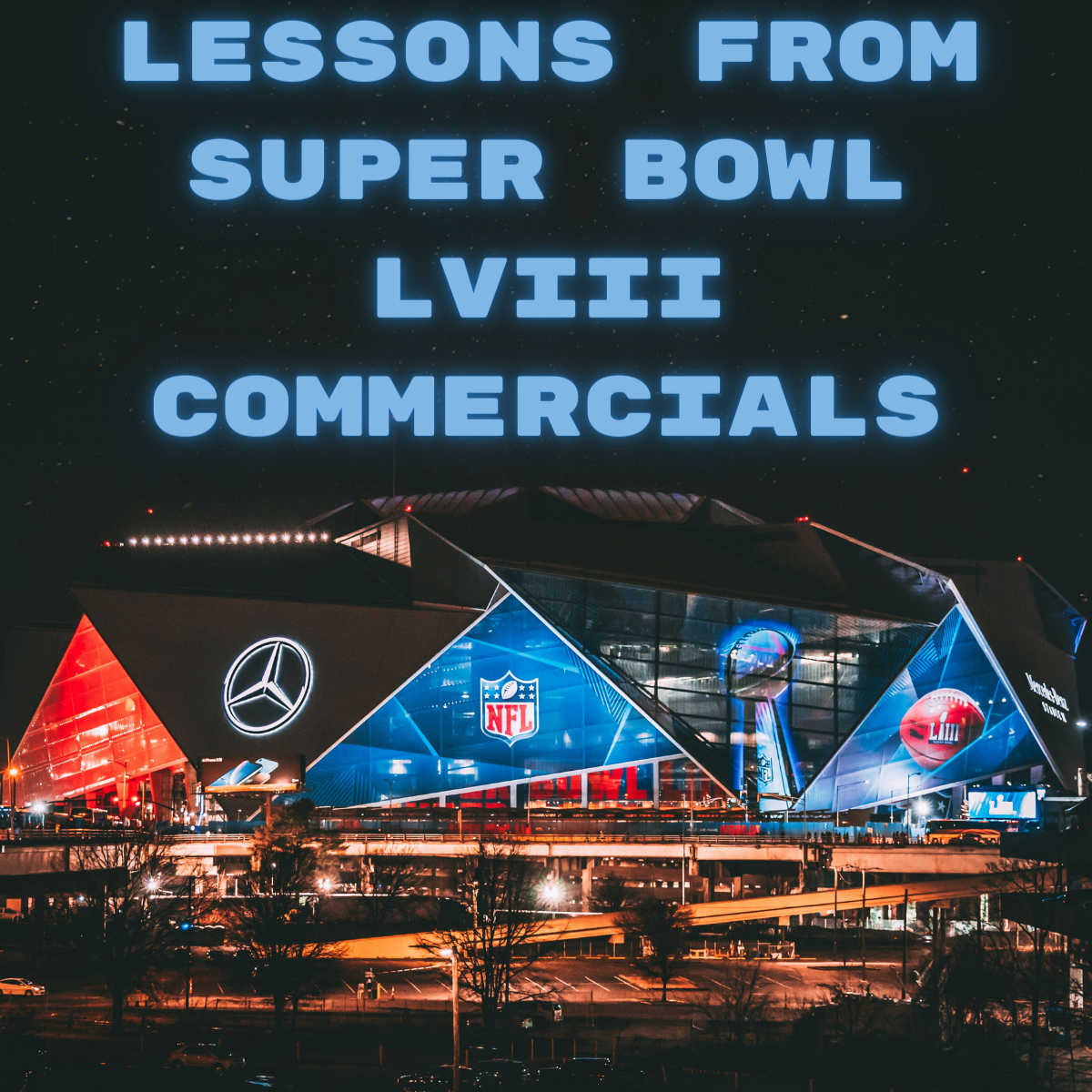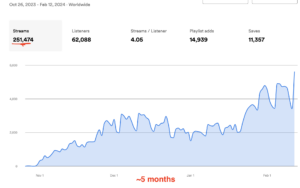I’m a little ashamed to admit this, but when an artist reaches out to our team at Two Story, here are the first two things I do to decide if they’re “legit” or not.
1) I see how many streams they’ve got on their top track, and 2) I see how many followers they have on Spotify.
Now, these aren’t the only things I look at. And I’m definitely not saying we cover artists based solely on whether they have a bunch of streams and followers. We’re not Rolling Stone; we cover artists with barely any streams all the time.
But, I’ll be honest, the Spotify profile is usually the first thing I look at to figure out if other people are interested in the artist – and if other people seem interested in the artist, I’m at least going to give them a shot to make sure I’m not missing something.
Long-story-short: Spotify followers matter.
And they matter for more than what I’ve ashamedly described above (i.e., the fact that big numbers open industry doors). Really, that’s only a secondary benefit – the primary benefit of getting Spotify followers is that, you know, people are actually following your music. On Spotify, this means that every time you release a new track, more people will see it. In real-life-terms, it means that genuine humans are raising their hands and saying “I like this artist and I want to hear more from them.”
As musicians, that’s like the thing most of us want, right?
All of this begs the obvious question: How can you get more people to follow you on Spotify?
Fortunately, the answer is, in its simplest terms, an easy-to-understand, two-step process:
- Be an artist worth following.
- Send traffic to your Spotify artist profile.
That’s it. Get people to visit your profile, and if you’re an artist worth following, some of the people who visit your profile will follow you. If you do those two things over a prolonged period of time, you’ll get more followers on Spotify.
“Yeah, that’s really vague and not that helpful,” you’re thinking. Fair point.
Don’t worry – I’m not going to leave you hanging. Those two steps are the core principles, but let’s dig deeper into some of the tactics that’ll actually lead to follower growth. If you want more followers on Spotify in 2022 (and beyond), here are the practical things you’ll need to do, categorized under our simple, two-step process.
Be an artist worth following.
I’ve used this illustration before, but I think it’s helpful, so I’m going to use it again: You want to be more like the Foo Fighters and less like James TW.
James TW is an English pop star whose top track as more than half a billion streams (549,813,646 at the time I’m writing this). So, yeah, he’s doing pretty well.
He has around 1M followers.
The Foo Fighters are that 90s band that Dave Grohl is in (and Taylor Hawkins used to be in – RIP). Their top track has 649,935,950 streams.
They have around 10M followers.
In other words, while the Foo Fighters have a slight edge in traffic, they have a ridiculous 10 times as many followers as James TW.
The question is: Why?
I think the answer is that the Foo Fighters are an act that’s more “followable” than James TW (and yes, I know that “followable” isn’t a word, which is why I keep putting it in quotation marks, jeez).
That’s no offense to James TW, whose music I actually really enjoy and who we interviewed here at Two Story Melody. The follower disparity is just the inevitable result of the Foo Fighter’s having been around for like 30 years; over that time, they’ve played like eight million shows, been integrated into pop culture in plenty of weird ways, and, generally, just built a huge, identifiable brand around their band.
Because of this, the average person who listens to the Foo Fighters is approximately 10 times more likely to click the “Follow” button on Spotify than the average person who listens to James TW. James TW is an artist worth listening to on a playlist; the Foo Fighters are an act worth following.
Obviously, you are not the Foo Fighters. (And if you are, why the heck are you reading this article?) But you can try to become an artist worth following.
It’ll take time, but here are three things that’ll help.
1. Clarify your brand.
This is a post about how to get more followers on Spotify, not about the intricacies of branding, so I’ll keep this short and sweet. As an artist, you should have clearly identified (and identifiable) core values and perspectives. You should stand for something.
You should also have a visual identity that matches a) your music and b) your values and perspectives.
Some of this you should clarify immediately, whether you have music out or not. Some of it will develop over time, as your art will naturally reflect your personality.
But yeah, having a strong brand really helps to turn traffic into followers (and from there into true fans). Shameless plug here: If you want help with your branding, I actually have a course that’s accurately titled Build Your Brand – you can check it out here.
2. Make your Spotify profile look lively.
Really, you could lump this tip (and the next one) under “branding”, but I think it’s important to break out these tactics – because if your Spotify profile looks dead, people won’t want to follow it.
I’d recommend doing everything you can to set things up via Spotify for Artists:
- Make sure your profile is verified (your distributor should make this easy)
- Make sure you have cool-looking profile images
- Select a playlist, album, or song to feature
- Add merch (if you have Shopify)
- Create a playlist and add it to your “Artist Playlists” sections
- Add a bio
- Add all of your links (Instagram, Facebook, Twitter – whatever you’ve got)
If you’re missing any of the basics, people who hit your profile may question whether you’re actively making music / whether you have a pulse – and if they ask those questions, they’ll be less likely to follow. Make sure things look lively.
3. Have an active presence somewhere outside of Spotify.
Contrary to what you may hear from other marketers, I don’t think you need to be on TikTok and Instagram and Snapchat and Twitter and Pinterest and whatever else.
But I do think you need one platform, other than Spotify, where you’re telling your story as an artist. Most often, I think that platform should be TikTok or Instagram.
Again, this is a post on building Spotify followers, not on running a social media channel, but here are a few things I think you should probably do:
- Optimize your profile (like we just talked about for Spotify, make sure you’re filling in all of the basic data points so things look lively)
- Post at least twice per week (more is usually better, but don’t wear yourself out)
- Interact with followers (as much as makes sense for you)
- Collaborate with other artists (this is a huge part of growing any channel)
- Avoid Jake Paul (to the degree that you can)
This whole point – storytelling / social channel building – is, again a part of branding. The whole idea is that, when people find your music and like it, you offer them more context to engage with your artistry.
The deeper would-be fans can go into your artistry, the more “followable” you are.
Send traffic to your Spotify artist profile.
Okay, this is the second step of our simple, two-step framework (and, realistically, this is probably what came to mind first when you thought of growing your Spotify following – it’s what all the other blogs cover, at least). Let’s dig in, because to get people to follow you on Spotify, you have to get people to visit your profile; it doesn’t matter if you’re “followable” if nobody’s finding you in the first place.
There are three basic ways you can get people to find your profile:
1. Organic off-platform traffic
This one’s the most open-ended; it basically includes anything that doesn’t fall under the subsequent two methods. Organic, off-platform traffic could come from places like:
- Your live shows
- Your organic social media growth
- Write-ups you get in press outlets
- Word-of-mouth (i.e., people who like your music recommending it to their friends)
- Jake Paul
Basically, this bucket of traffic is people somehow hearing about your music and then deciding to check you out on Spotify. You don’t have a ton of direct control over this, but you can build a brand that, over time, leads to this kind of growth.
2. Ads-based traffic
This one’s much more controllable – you can almost literally pull a lever and make it happen. The idea is that you run ads from another platform (usually Facebook and Instagram, although it’s worth keeping an eye on TikTok) to your Spotify profile.
Two tips toward making that happen:
- Run “conversion” campaigns, not “traffic” campaigns. More on that here.
- Continually refine your targeting. Targeting is really the name of the game for running effective ads. Generally, the broader you go, the lower your costs will be (i.e., international audiences are cheaper). And, eventually, you’ll want to incorporate retargeting and lookalike audiences that can cut your costs down further. Takes work, but it’s worth it.
This tends to be expensive, but once you get it worked out, it’s pretty predictable.
Now, “expensive” is a relative term; depending on your targeting and how well you optimize your campaign, you may be able to get followers for less than $0.30 a piece (although usually you’ll pay a little more). It’s up to you to decide whether the cost is worth it. Streaming, as you probably know, doesn’t pay a ton, so any investment you make in getting more followers isn’t one that’ll immediately generate a monetary ROI.
But if you’re willing to spend a few hundred bucks a month, you can probably count on getting somewhere between 50 and a few hundred followers each month, which is pretty cool.
3. On-platform traffic
The third method to get people to your profile is to direct users who are already on Spotify to your profile. This tends to be cheaper than ads (because you don’t have to pay to switch people to another platform), but it can be a little less predictable.
There are two ways to drive on-platform traffic:
Get on Spotify playlists.
You can pitch editorial playlists a few weeks before you release a song. You can pitch third-party playlist creators any time you want. We’ve got a full article on how to do that here. You can also pay promotion services to do this for you.
Generally, third-party playlists drive a bunch of very cost-efficient streams, but less-engaged listens. Let’s say you pitch the owner of “Chill Dinner Vibes” and get added to the list, for example; chances are that the people who hear your music aren’t going to stop dinner to click to your profile and follow you. But if a playlist is built with real listeners, you should see some followers come in when you’re added.
Run ads directly on Spotify.
Spotify has a limited suite of advertising tools built into their platform. The coolest one is probably Marquee. Basically, you can show interested people a pop-up that’ll take them straight to your new release. The drawback is that you need more than 15k streams over the last 28 days or more than 2.5k followers – so it’s not really an option if you’re just starting out.
Generally, Spotify ads are a little more expensive on a per-click basis than off-platform ads, but they tend to generate really valuable clicks (because users are already on the platform, so there’s less drop-off after the click).
Final thoughts on getting more Spotify followers
If you’ve read this far, nice work – with this info, you’re pretty much famous on Spotify!
Heh, just kidding. Time for more painful honesty: The truth is that knowing how to get more followers on Spotify matters only a tiny bit. You’ve got to actually act to accumulate followers.
Which leads me to my final tip. I’ve left out literally the biggest factor in getting Spotify followers, and it’s this:
To get more Spotify followers, you need to release more music on Spotify.
You could avoid doing almost everything I’ve mentioned above, but if you put out music prolifically – say, 12 songs a year for the next two decades – you’re going to get waaay more followers than the artist who puts out one song over the next three years. That’s the cold, hard reality.
Daniel Ek (the CEO of Spotify) took a bunch of flak for saying essentially this a little while ago, but it is true.
So, build your brand, optimize your profiles, work on social channels, familiarize yourself with ads, yeah yeah yeah – but please, even though it feels hard, don’t get distracted from the music. That’s the actual point of all the other stuff.
And one last thought: Followers matter, but numbers aren’t everything.
As I wrote at the top of this piece, the main reason followers matter is because they represent real people who care about your music. It goes beyond any platform; you don’t need 10M Spotify followers to meaningfully connect with people around your art. You just need someone to hear the music and appreciate your artistry.
Numbers are nice, but connection is ultimately what it’s all about.
Here’s wishing you good luck in finding it.











